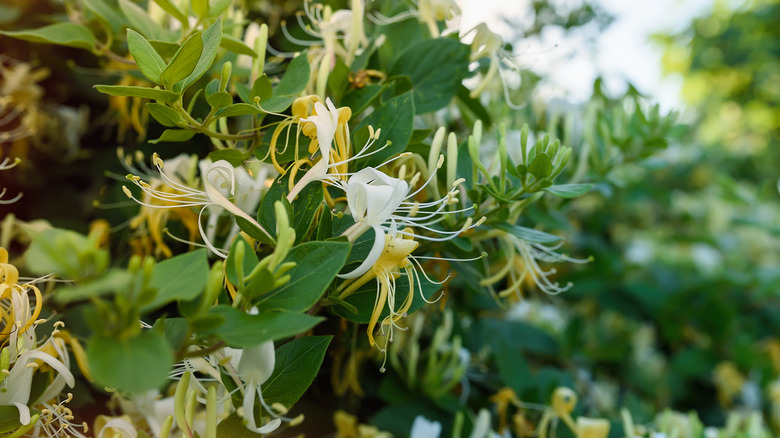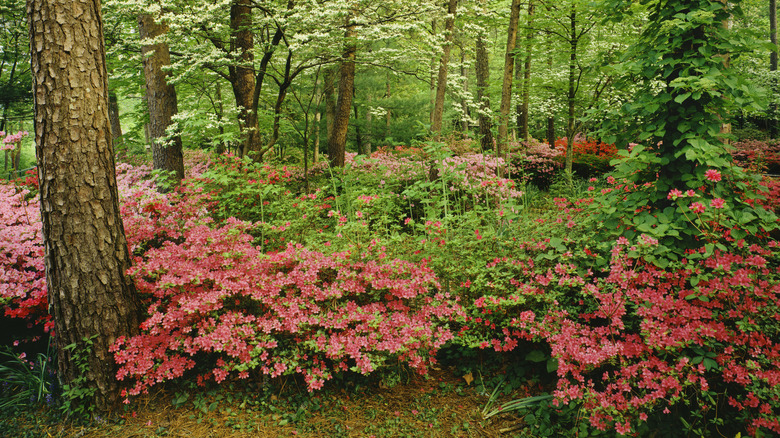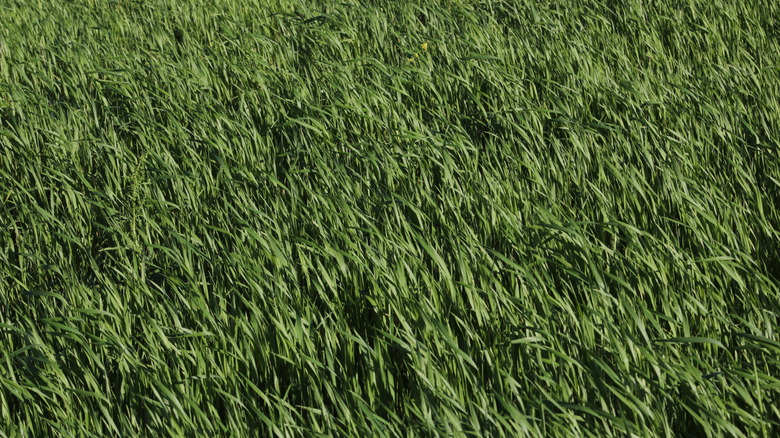4 Plants You'll Want To Avoid Growing Around Tree Roots
A beautiful yard with colorful plants and strong trees is a dream come true for most people, but it all depends on the plants you choose and how you organize them. Failure to research can cause you to accidentally mix plants or shrubs that compete with your trees. This is especially true if your yard is covered in many trees. Forgetting that some plants will naturally compete with trees and planting them near each other can spell disaster. Instead of getting a thriving yard where you love to relax, you can end up with unhealthy plants, sick trees, and ongoing treatments.
Some plants can damage or stunt tree root growth. They may create aggressive competition for water or nutrients or release a substance that can inhibit tree growth. To make it worse, you may not notice this happening until it causes a lot of damage to the trees or plants. Recognizing this problem is critical because it can go beyond seeing wilted flowers or stunted tree growth. Instead, your garden's ecosystem can suffer. By picking your plants wisely and knowing what to skip planting, you can prevent problems. These guidelines will also help you choose the right locations for your plants and trees so that your garden and yard stay healthy year round.
Hydrangeas compete with tree roots for water and nutrients
Hydrangeas can be deep blue or bright pink based on the soil's pH level. They are beautiful shrubs with lush leaves and impressive blooms, making eye-catching, attractive features in your yard or garden. These shrubs can thrive in partial shade and full sunlight. They're hardy plants that grow in varying soil types without an issue as long as it drains well, and it may be tempting to place them around the bases of trees because they fill in a spot that could stay bare due to lack of sunlight.
To avoid mistakes people make when planting hydrangeas, keep them away from tree roots. These plants love nutrients and water, allowing them to compete with your trees. The roots of established trees can spread out many feet, and they need a considerable amount of soil nutrients and water to stay healthy. Hydrangeas are very similar, and they can pull many of these things before they reach the tree roots, making both plants struggle. This competition can weaken both the tree and the hydrangea shrub and may slow or stunt the tree's growth and ability to bloom. So, plant your hydrangeas in an area away from large trees, ensuring they can both grow without issues.
Japanese honeysuckle outcompetes small trees for nutrients
Japanese honeysuckle is a very fast-growing vine that produces yellow or white flowers that are very delicate and have a sweet smell. It's nice in the garden for growing over trellises, fences, and other structures, offering a living privacy fence with lush greenery. This plant prefers moist soil with good drainage. You'll spend minimal time caring for it, making it a solid choice if you're looking for a fast-growing landscaping plant.
However, Japanese honeysuckle shouldn't be planted near tree roots. This strong vine has a reputation for being able to outcompete nearby plants for nutrients and water, including small trees. Also, as it grows, it'll form a dense net that hugs the tree's base, limiting how much water the tree can absorb. Over time, this constant competition can stress the tree, leading to slow growth or even killing younger trees if it overwhelms them. This is not just an aggressive plant, but an invasive one. To protect your trees, plant Japanese honeysuckle away from any of them to ensure they can both survive without negatively impacting one another.
Azaleas compete with shallow-rooted trees for nutrients
Azaleas have a reputation for growing stunning flowers in a large color range, from soft pastels to bold red or vivid pink. Most varieties of azalea flower in the spring, giving you a dramatic display that makes your landscape look beautiful. Gardeners love these plants because they can adapt to several climates, they grow well in the shade, and there are several types of azaleas you can grow in your garden. This makes them a great choice to brighten up your yard's dark corners, which is why many people mistakenly plant them under trees.
Although they are beautiful, you should not plant azaleas around trees with shallow roots. These shrubs have shallow root systems, spreading throughout your yard to absorb moisture and nutrients from the soil. When you put them by these trees, they can pull a lot of nutrients from the soil, leaving both competing for survival. While azaleas can grow near trees, you must do your research and choose a tree that will not take too many nutrients from them, like a pine tree. To keep everything healthy and visually appealing, plant your azaleas in spots without competition with trees, ensuring both plants can thrive.
Tall fescue releases phenolic chemicals that inhibit tree root growth
Tall fescue is a perennial grass that is very hardy, and it's popular because it gives you very dense coverage. It can also survive a lot of wear and tear without showing it, making it an excellent option for high-traffic areas. It's also a very drought-resistant plant that can grow in a range of soils, from sandy to clay-based. This adaptability, combined with tall fescue's ability to survive in partial shade, makes it a popular option if you're looking for low-maintenance grass.
However, you want to avoid planting tall fescue around your trees' root zones. One of the major drawbacks of having tall fescue grass is that it releases phenolic chemicals into the soil, and these natural substances slow or stop other plant root growth, including trees. When these chemicals build up in the soil, they can have a negative impact on your trees' root development and health, potentially stunting their stability, growth, and overall health. To ensure your trees and tall fescue stay healthy, pick a different grass or ground cover near your trees.





